Sean Bienvenidos Fanáticosjaponesitas A Una Nueva Entrega De Arqueología, En Esta Ocasión Hablaremos



Sean bienvenidos fanáticosjaponesitas a una nueva entrega de Arqueología, en esta ocasión hablaremos de uno de los mayores monumentos del mundo asiático que se localiza en la ciudad de Nara, prefectura de Honshu. - Dicho esto, pónganse cómodos que comenzamos, tengo el placer de presentaros al templo budista Todaiji, es uno de los más grandes y data de los años: (710-784) después de nuestra era. El día 15/4/2022 tuve el placer de enterarme de que se habían encontrado restos de un líquido localizado en la pared exterior del Gran Salón del Buda. - Dicho líquido alberga el rango de 70 cm a 80 cm de ancho de la pared, dicho acto me duele igual que un japonés, ya que esto es mancillar el buen nombre de la religión budista, siendo la segunda más procesada en todo el país tras el sintoísmo además siendo uno de los edificios más icónicos de japón. - La policía está investigando a través de las cámaras de seguridad, gracias al gamberro, que posiblemente sea un turista que no tiene ni idea de lo que está viendo. Consejo si van a visitar un monumento háganme él por favor de informarme previamente. - Un saludo, por la gloria del emperador y de Amaterasu, nos despedimos hasta una próxima publicación. - Japanese fans are welcome to a new installment of Archeology, this time we will talk about one of the largest monuments in the Asian world that is located in the city of Nara, Honshu prefecture. - That said, make yourself comfortable, let's begin, I have the pleasure of introducing you to the Todaiji Buddhist temple, it is one of the largest and dates from the years: (710-784) after our era. On 4/15/2022, I was pleased to learn that traces of a localized liquid had been found on the outer wall of the Great Buddha Hall. - Said liquid houses the range of 70 cm to 80 cm wide of the wall, said act hurts me just like a Japanese, since this is tarnishing the good name of the Buddhist religion, being the second most processed in the whole country after the shintoism also being one of the most iconic buildings in japan. - The police are investigating via security cameras, thanks to the thug, who is possibly a tourist who has no idea what he is seeing. Advice if you are going to visit a monument, please let me know beforehand. - A greeting, for the glory of the emperor and Amaterasu, we say goodbye until a next publication. - 日本のファンは考古学の新作を歓迎します。今回は、本州県奈良市にあるアジア世界最大のモニュメントの1つについてお話します。 - とはいえ、快適に過ごしましょう。まずは、東大寺を紹介できることをうれしく思います。東大寺は、私たちの時代からの最も大きな寺院の1つです。 2022年4月15日、大仏殿の外壁に局所的な液体の痕跡が見つかったことを知り、うれしく思いました。 - この液体は壁の幅70cmから80cmの範囲にあり、これは仏教の名を傷つけているので、日本人のように私を傷つけます。これは神道に次いで全国で2番目に処理されています。日本で最も象徴的な建物の1つです。 - 警察は、彼が何を見ているのかわからない観光客である可能性のある凶悪犯のおかげで、防犯カメラを介して調査しています。記念碑を訪れる場合のアドバイスは、事前にお知らせください。 - 天照大神と天照大神の栄光にご挨拶、次の出版までお別れを申し上げます。日本のファンは考古学の新作を歓迎します。今回は、本州県奈良市にあるアジア世界最大のモニュメントの1つについてお話します。 - とはいえ、快適に過ごしましょう。まずは、東大寺を紹介できることをうれしく思います。東大寺は、私たちの時代からの最も大きな寺院の1つです。 2022年4月15日、大仏殿の外壁に局所的な液体の痕跡が見つかったことを知り、うれしく思いました。 - この液体は壁の幅70cmから80cmの範囲にあり、これは仏教の名を傷つけているので、日本人のように私を傷つけます。これは神道に次いで全国で2番目に処理されています。日本で最も象徴的な建物の1つです。 - 警察は、彼が何を見ているのかわからない観光客である可能性のある凶悪犯のおかげで、防犯カメラを介して調査しています。記念碑を訪れる場合のアドバイスは、事前にお知らせください。 - 天照大神と天照大神の栄光にご挨拶、次の出版までお別れを申し上げます。
More Posts from Noticiasarquelogicasjaponesas and Others



Fumio Kishida, known for raising taxes last year, is stepping down as prime minister today, and now it is time to wait and see what the future holds for Japan.
-
昨年の増税で知られる岸田文雄氏が今日、首相を辞任する。
-
Hoy dimite Fumio Kishida como primer ministro, conocido por la subida de impuestos el pasado año, ahora toca esperar que le deparara a Japón.









Capítulo 1: INTRODUCCIÓN El japón pre-Jomon. Sean bienvenidos, japonistasarqueologos, a una nueva entrega, arqueológica, una vez dicho esto pónganse cómodos que empezamos. - En esta ocasión nos trasladamos al yacimiento arqueológico Iwajuku, es un sitio arqueológico que está ubicado en lo que ahora corresponde al barrio de Kasuke en la ciudad de Midori, prefectura de Gunma en la región de Kantō, este lugar recibió protección como Sitio Histórico Nacional en 1979 por parte de la unesco y data del paleolítico superior 35.000 -25000 a.C mucho más antiguo que el periodo Jomon estudios recientes lo fechan hace 40.000 años. Las fotos que os mostraré a continuación son del museo de la universidad Meiji, aparte de industria lítica hecha con obsidiana también hay guijarros de piedra. - Espero que os haya gustado y nos vemos en próximas publicaciones que pasen una buena semana. Capítulo 1: INTRODUCCIÓN El japón pre-Jomon. Sean bienvenidos, japonistasarqueologos, a una nueva entrega, arqueológica, una vez dicho esto pónganse cómodos que empezamos. - En esta ocasión nos trasladamos al yacimiento arqueológico Iwajuku, es un sitio arqueológico que está ubicado en lo que ahora corresponde al barrio de Kasuke en la ciudad de Midori, prefectura de Gunma en la región de Kantō, este lugar recibió protección como Sitio Histórico Nacional en 1979 por parte de la unesco y data del paleolítico superior 35.000 -25000 a.C mucho más antiguo que el periodo Jomon estudios recientes lo fechan hace 40.000 años. Las fotos que os mostraré a continuación son del museo de la universidad Meiji, aparte de industria lítica hecha con obsidiana también hay guijarros de piedra. - Espero que os haya gustado y nos vemos en próximas publicaciones que pasen una buena semana. - 第 1 章: はじめに 縄文以前の日本。 日本の考古学者の皆さん、新しい考古学へようこそ。そうは言っても、気を楽にして始めましょう。 - この度、岩宿遺跡へ移動しました。 岩宿遺跡は、現在の関東地方の群馬県みどり市嘉助地区に相当する遺跡で、平成29年に国の史跡として保護されています。 1979年にユネスコによって認定され、その起源は紀元前3万5千年から紀元前2万5千年の後期旧石器時代にまで遡り、縄文時代よりはるかに古く、最近の研究では4万年前のものであると推定されています。以下に紹介する写真は明治大学博物館所蔵のものですが、黒曜石を使った石工業のほかに石の小石もあります。 - 気に入っていただければ幸いです。今後の投稿でお会いしましょう。良い一週間をお過ごしください。 - Chapter 1: INTRODUCTION Pre-Jomon Japan. Welcome, Japanese archaeologists, to a new archaeological installment. Having said that, make yourself comfortable and let's begin. - On this occasion we moved to the Iwajuku archaeological site, it is an archaeological site that is located in what now corresponds to the Kasuke neighborhood in the city of Midori, Gunma prefecture in the Kantō region, this place received protection as a National Historic Site in 1979 by UNESCO and dates back to the Upper Paleolithic 35,000 / 25,000 BC, much older than the Jomon period, recent studies date it to 40,000 years ago. The photos that I will show you below are from the Meiji University Museum, apart from lithic industry made with obsidian there are also stone pebbles. - I hope you liked it and see you in future posts, have a good week.




Sean bienvenidos japonistasarqueológicos a una nueva entrega para esta cuenta, en esta ocasión os voy a contar la historia del Guion Matsuri (祇園祭) aparece por primera vez primera en el siglo IX( 865) durante el periodo Heian. - ¿Qué significa esta festividad? Representa cuando se sofocó la epidemia que tuvo lugar en Kioto durante el período Heian se fabricaron 66 alabardas en el Jardín Shinsen-en y se rezó por la extinción de la epidemia. - El Gion Matsuri se celebra cada mes de julio y es una festividad muy característica del verano que van desde: 1 al 31 de julio. - Espero que os haya gustado y nos vemos en próximas publicaciones de arqueología e historia Japonesa un cordial saludo. - 考古学ジャポニストは、このアカウントの新作を歓迎します。今回は、平安時代の9世紀(865)に最初に登場した祇園祭の物語をお伝えします。 - この休日はどういう意味ですか? 平安時代に京都で起こった流行が鎮圧され、神泉苑で66の鉾が作られ、流行の絶滅を祈願したことを表しています。 - 祇園祭は毎年7月に祝われ、7月1日から31日まで続く夏の非常に特徴的なお祭りです。 - あなたがそれを気に入ってくれて、日本の考古学と歴史の将来の出版物であなたに会えることを願っています、心からの挨拶。 - Archaeological Japonists are welcome to a new installment for this account, this time I am going to tell you the story of the Matsuri Script (祇園祭) first appears in the 9th century (865) during the Heian period. - What does this holiday mean? It represents when the epidemic that took place in Kyoto during the Heian period was quelled, 66 halberds were made in the Shinsen-en Garden and prayers were made for the extinction of the epidemic. - The Gion Matsuri is celebrated every July and is a very characteristic festivity of the summer that goes from: July 1 to 31. - I hope you liked it and see you in future publications of Japanese archeology and history, a cordial greeting.

コストコ予定地で「遺構を一般公開せず埋めた」報道 市教委「法律違反かの印象与える記事は心外」...朝日新聞の見解は
-


Report on 'remains buried without public access' at planned Costco site, City Board of Education: 'It is disturbing to read an article that gives the impression that it is against the law…'… What is the Asahi Shimbun's view?
El origen de un país y su prehistoria, un paseo por la historia del país del sol naciente. /国の成り立ちと先史、日出ずる国の歴史を歩く。/The origin of a country and its prehistory, a walk through the history of the country of the rising sun.
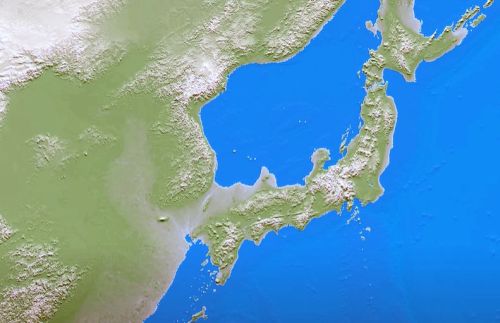

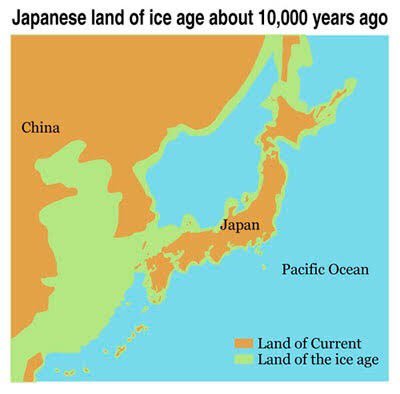

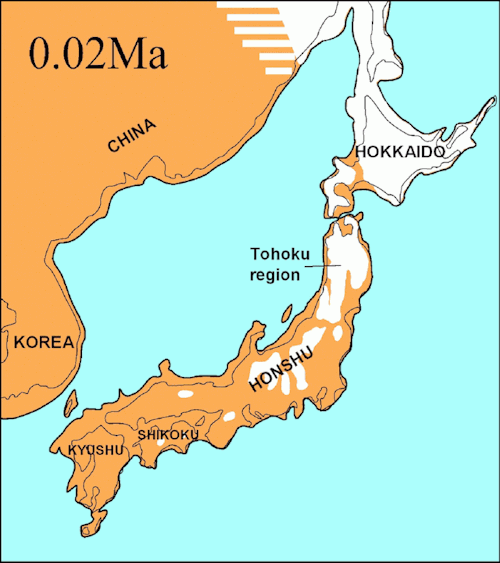

Sean bienvenidos, japonistasarqueológicos, a una nueva entrega de arqueología nipona e historia nipona, una vez dicho esto pónganse cómodos qué empezamos.
-
En los capítulos 1,2,3:Hablamos de: ¿Cuándo llegaron por primera vez los homínidos a Japón? ¿De qué vivían? Hablamos un poco de su geografía, de las cuatro eras glaciales, también se mencionó el holoceno. Empezamos a hablar del pleistoceno, y de cuando empezó la prehistoria de hace 2,5 (esta fecha está desfasada actualmente ronda 4 millones, por los hallazgos de industria lítica) a 7 millones de años. Comentamos algunos homínidos: Homo neanderthalensis, Homo heidelbergensis, homo ergaster entre otros homínidos, comentamos como África es la cuna de la humanidad, y su diversidad de dispersiones migratorias. También se comentó la llegada los homínidos a Okinawa hace 30.000-40.000 años y los Ainus como posibles primeros pobladores. Seguimos hablando del pleistoceno, estuvimos explicando un poco sobre el pleistoceno, se mencionó un poco la formación del archipiélago, mencioné mi posible teoría y al final terminamos con ¿Cómo se llaman las placas tectónicas que forman el archipiélago?
-
Espero que os guste y nos vemos en próximas publicaciones, que pasen una buena semana.
-
日本の考古学者諸君、ようこそ、日本考古学と日本史の新連載へ!さあ、くつろいで、始めよう。
第1章、第2章、第3章では、「ヒト科の動物はいつ日本にやってきたのか?地理、4つの氷河期、完新世についても少し触れました。更新世について話し始め、先史時代が始まった250万年前(この年代は、石器産業の発見により、現在では約400万年古くなっている)から700万年前について話した。ホモ・ネアンデルターレンシス、ホモ・ハイデルベルゲンシス、ホモ・エルガスターなどのホミノイドについて解説し、アフリカが人類発祥の地であること、その移動分散の多様性について述べた。また、3万~4万年前の沖縄へのヒト科動物の到着と、最初の入植者である可能性のあるアイヌ人についても議論した。私たちは更新世について話を続け、列島の形成について少し説明し、私が可能性のある説を述べ、最後にこう締めくくった。 列島を形成しているプレートの名前は?
それではまた、良い一週間を。
-
Welcome, Japanese archaeologists, to a new instalment of Japanese archaeology and Japanese history, so make yourselves comfortable and let's get started.
In chapters 1,2,3:We talk about: When did hominids first arrive in Japan? What did they live on? We talked a little bit about their geography, the four ice ages, the Holocene was also mentioned. We started talking about the Pleistocene, and when prehistory began from 2.5 (this date is now out of date by about 4 million years ago, due to the findings of lithic industry) to 7 million years ago. We commented on some hominids: Homo neanderthalensis, Homo heidelbergensis, homo ergaster among other hominids, we commented on how Africa is the cradle of humanity, and its diversity of migratory dispersions. We also discussed the arrival of hominids in Okinawa 30,000-40,000 years ago and the Ainus as possible first settlers. We continued talking about the Pleistocene, we were explaining a bit about the Pleistocene, the formation of the archipelago was mentioned a bit, I mentioned my possible theory and at the end we finished with What are the names of the tectonic plates that form the archipelago?
I hope you like it and see you in future posts, have a nice week.






Sean bienvenidos, japonistasarqueologos, a una nueva entrega en esta ocasión os presento por encima a un nuevo Yōkai una vez dicho esto pónganse cómodos que empezamos. - En todo el mundo hay nutrias, pero por desgracia, están desapareciendo por qué el hombre las cazaba para pieles etc. Actualmente, quedan muy pocas y es ilegal tenerlas como mascota solo si tienes permiso. - Pero en este caso nos trasladamos a Japón y comentaré por encima a las nutrias de río, son consideras un demonio o espíritu llamados Yōkai y reciben el nombre de Kawauso y en hiragana (かわうそ), hay muchos animes que abarcan este tema. ¿Conocían este Yōkai? - Espero que os guste y nos vemos en próximas publicaciones, que pasen una buena semana. - 日本びいきの皆さん、考古学者の皆さん、ようこそ新連載へ。今回は新しい妖怪を紹介しよう。 - カワウソは世界中に生息しているが、人間が毛皮などのために狩りをしたため、残念ながら姿を消しつつある。現在ではほとんど残っておらず、ペットとして飼うには許可を得なければ違法となっている。 - カワウソは妖怪と呼ばれ、ひらがなで「かわうそ」と呼ばれ、この話題を扱ったアニメがたくさんあります。 この妖怪を知っていますか? - それでは、また次の記事でお会いしましょう。 - Welcome, Japanophiles and archaeologists, to a new installment, this time I will introduce you to a new Yōkai, having said that, make yourselves comfortable and let's get started. - There are otters all over the world, but unfortunately, they are disappearing because humans used to hunt them for fur etc. Nowadays, there are very few of them left and it is illegal to keep them as pets only if you have a permit. - But in this case we move to Japan and I will comment on the river otters, they are considered a demon or spirit called Yōkai and are called Kawauso and in hiragana (かわうそ), there are many anime that cover this topic. Did you know this Yōkai? - Hope you like it and see you in next posts, have a nice week.




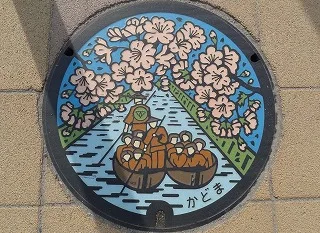
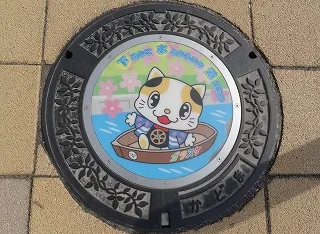

Sean bienvenidos japonistasarqueologos, a una nueva entrega en la cual os expondré una serie de fotos de tapas de alcantarilla japonesas. - Seguramente muchos os preguntaréis que tienen de especial porque están en todo el mundo civilizado, pero cada país tiene su estilo propio como en: Finlandia, entre otros muchos. - Pero Japón vive en el año 2050, seguramente que han escuchado esta expresión muchas veces y la verdad es que esto es una prueba de que Japón coge las cosas y las mejora a niveles planetarios. ¿Conocían esto? ¿Qué opinan? Os leo encantado. - Espero que os haya gustado y nos vemos en próximas publicaciones que pasen una buena semana. - 日本の考古学者の皆さん、日本のマンホールの蓋の写真を紹介する新連載へようこそ。 - マンホールの蓋は文明国中どこにでもあるが、国によって独自のスタイルがある:フィンランド、その他多数。 - しかし、日本は2050年に生きている。きっと、この表現を何度も耳にしたことがあるだろうが、真実は、日本が物事を捉え、惑星レベルまで改善している証拠なのだ。 あなたはこのことをご存知でしたか?私はそれを読んで喜んでいる。 - 今後の記事でお会いできることを楽しみにしています。 - Welcome Japanese archaeologists, to a new installment in which I will show you a series of photos of Japanese manhole covers. - Surely many of you will wonder what is so special about them because they are all over the civilized world, but each country has its own style as in: Finland, among many others. - But Japan is living in the year 2050, surely you have heard this expression many times and the truth is that this is proof that Japan takes things and improves them to planetary levels. Did you know this, what do you think? I am delighted to read it. - I hope you liked it and see you in future posts have a nice week.

Sean bienvenidos a un nuevo apartado de la cuenta jainistasarqueólogos, para estrenarlo vamos a hacer un reel a modo debate si os parece bien dicho esto pongan cómodos que empezamos. - ¿Por qué hay esvásticas o cruces gamadas en Japón, india, etc.? Me gustaría aclarar que esta publicación no busca incitar la motivación u odio hacia dicho símbolo, voy a explicaros un poco el verdadero del símbolo y de cómo fue utilizado para el mal. La cruz gamada se usa en muchas culturas del mundo desde el neolítico para adorar al sol, además significa buena fortuna o bienestar, es muy usada por el hinduismo, los antiguos griegos, etruscos y de cómo un simple símbolo dependiendo de cómo se enfoque puede cambiar bruscamente de bueno a malo o a la inversa. - ¿Qué opinan ustedes? Leo gustosamente los comentarios, por favor es un debate, se intenta no buscar idolatrías, yo me mantengo neutro. - Espero que os guste y nos vemos en próximas publicaciones, que pasen una buena semana. - Welcome to a new section of the Jainistasarqueólogos account, to release it we are going to do a reel in debate mode if you think this is well said, make us comfortable that we start. - Why are there swastikas or swastikas in Japan, India, etc.? I would like to clarify that this publication does not seek to incite motivation or hatred towards said symbol, I am going to explain a little about the true symbol and how it was used for evil. The swastika is used in many cultures of the world since the Neolithic to worship the sun, it also means good fortune or well-being, it is widely used by Hinduism, the ancient Greeks, Etruscans and how a simple symbol depending on how it is focused can change abruptly from good to bad or vice versa. - What do you think? I read the comments with pleasure, please, it's a debate, we try not to look for idolatry, I remain neutral. - I hope you like it and see you in future publications, have a good week. - アカウントの新しいセクションへようこそ、それを開くために、我々はあなたがそれが良いと思う場合は、議論としてリールを作るつもりですので、自分自身を快適にし、始めましょう。 - なぜ日本やインドなどに鉤十字や卍があるのでしょうか?この投稿は、シンボルに対する動機や憎悪を煽るためのものではないことを明確にしておきたい。実際のシンボルと、それがどのように悪のために使われたのかについて少し説明しよう。卍は新石器時代から世界中の多くの文化で太陽を崇拝するために使われており、幸運や幸福を意味するものでもある。ヒンドゥー教、古代ギリシャ、エトルリアなどで広く使われており、単純なシンボルがアプローチの仕方によって、善から悪へ、あるいはその逆へと突然変化するものなのだ。 - どう思いますか?私は中立を保ちますので、偶像崇拝を探さないでください。 - それではまた、良い1週間を。
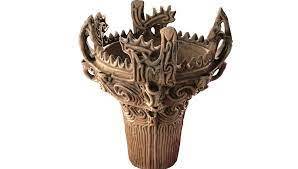



Introducción a la cerámica Jōmon: - Tipos cerámica Jōmon se dividen en 5 : 1 fukabachi 2 hachi 3 asabachi 4 tsubo 5 chuko - ¿Cónocian algúnos de estos tipos? os deseo un feliz día un cordial saludo. - Introduction to Jōmon Pottery: - Jōmon ceramic types are divided into 5: 1 fukabachi 2 hachi 3 asabachi 4 tsubo 5 chuko - Do you know any of these guys? I wish you a happy day, a cordial greeting. - 縄文土器の紹介: - 縄文土器は次の5種類に分類されます。 深鉢 1個 2ハチ 3アサバチ 4坪 5中子 - この人たちを知っている人はいますか? 幸せな 一日をお祈りします。心からのご挨拶を申し上げます。





En esta publicación hablaremos sobre el Túmulo funerario de Hirata Umeyama, localizado en el pueblo de Asuka, distrito de Takaichi, prefectura de Nara, mide 140 m y se cree que fue construido a finales del período Kofun VI d.c, fue la tumba de un gran rey durante el período final de la soberanía de Yamato. - Está administrado por la Agencia de la Casa Imperial, que estableció un lugar de culto en el mausoleo Hinokuma-zakaago del emperador Kinmei, cabe destacar que el 90% de los kofun son sagrados. El túmulo funerario de Maruyama localizado en la ciudad de Kashihara, es el túmulo funerario más grande de la prefectura de Nara y el 6º en Japón y tiene una longitud de 318 m, se trata de la tumba del emperador Kinmei. - Cabe destacar que hasta que no se realicen estudios es difícil saberlo, pero como he dicho antes, al ser sitios sacros los estudios son dificultosos. "Konjaku Monogatari Shu" (Colección de cuentos de tiempos pasados), que se completó al final del período Heian, contiene una anotación que sugiere que el túmulo Hirata Umeyama fue la tumba del emperador Kinmei, por lo que ya se pensaba ser la tumba del emperador Kinmei en la Edad Media” - Durante el período Edo, el montículo y sus alrededores se vieron modificados en gran medida, en lo que respecta a su posición original, el túmulo de Hirata Umeyama tiene unas características del período Asuka. Debido a su relación con el túmulo funerario de Maruyama localizado en la ciudad de Kashihara, está a tan solo a unos 700 m de distancia. - Espero que os haya gustado y nos vemos en próximas publicaciones. - In this publication we will talk about the Hirata Umeyama Burial Mound, located in the town of Asuka, Takaichi district, Nara prefecture, it measures 140 m and is believed to have been built at the end of the Kofun VI period AD, it was the tomb of a great king during the final period of Yamato's sovereignty. - It is administered by the Imperial Household Agency, which established a place of worship in the Hinokuma-zakaago mausoleum of Emperor Kinmei, it should be noted that 90% of the kofun are sacred. The Maruyama Burial Mound, located in the city of Kashihara, is the largest burial mound in Nara Prefecture and the 6th in Japan and has a length of 318 m. It is the tomb of Emperor Kinmei. - It should be noted that until studies are carried out it is difficult to know, but as I said before, since they are sacred sites, studies are difficult. "Konjaku Monogatari Shu" (Collection of Tales of Bygone Times), which was completed at the end of the Heian period, contains an annotation suggesting that the Hirata Umeyama mound was the tomb of Emperor Kinmei, so it was already thought to be the tomb of the Emperor Kinmei in the Middle Ages - During the Edo period, the mound and its surroundings were greatly modified. Regarding its original position, the Hirata Umeyama mound has characteristics of the Asuka period. Due to its relationship with the Maruyama burial mound located in the city of Kashihara, it is only about 700 m away. - I hope you liked it and see you in future posts. - 今回は、奈良県高市郡明日香町にある平田梅山古墳について紹介します。古墳第六期末期に築造されたと考えられている全長140メートルの古墳です。ヤマト王権末期の大王の墓。 - 欽明天皇の檜隈坂合御陵に拝所を設置した宮内庁が管理しており、古墳の9割が神聖であることに注目すべきである。 橿原市にある丸山古墳は、全長318mで奈良県最大、全国6番目の古墳です。 - なお、研究してみないとわかりませんが、先ほども言いましたが、聖地であるため研究は困難です。 平安時代末期に成立した『今昔物語集』には、平田梅山古墳を欽明天皇陵とする注記があり、すでに欽明天皇陵であると考えられていた。中世の欽明天皇の - 平田梅山古墳は、江戸時代に墳丘とその周囲が大きく改変されましたが、その原位置は飛鳥時代の特徴を持っています。橿原市にある丸山古墳との関係で700mほどしか離れていない。 - 気に入っていただければ幸いです。今後の投稿でお会いしましょう
-
 feranova liked this · 5 months ago
feranova liked this · 5 months ago -
 autonomy1 liked this · 5 months ago
autonomy1 liked this · 5 months ago -
 rennane-renna liked this · 7 months ago
rennane-renna liked this · 7 months ago -
 max2050 liked this · 8 months ago
max2050 liked this · 8 months ago -
 northameicanblog liked this · 9 months ago
northameicanblog liked this · 9 months ago -
 j3337777 liked this · 9 months ago
j3337777 liked this · 9 months ago -
 asongpanda1 liked this · 9 months ago
asongpanda1 liked this · 9 months ago -
 missiongd liked this · 9 months ago
missiongd liked this · 9 months ago -
 junian5522 liked this · 9 months ago
junian5522 liked this · 9 months ago -
 ninomeira liked this · 9 months ago
ninomeira liked this · 9 months ago -
 repera23 liked this · 9 months ago
repera23 liked this · 9 months ago -
 noticiasarquelogicasjaponesas reblogged this · 10 months ago
noticiasarquelogicasjaponesas reblogged this · 10 months ago -
 thelcsdaily liked this · 10 months ago
thelcsdaily liked this · 10 months ago -
 thelcsdaily reblogged this · 10 months ago
thelcsdaily reblogged this · 10 months ago -
 nevergoodenough-4u liked this · 10 months ago
nevergoodenough-4u liked this · 10 months ago -
 fplkk2022 liked this · 10 months ago
fplkk2022 liked this · 10 months ago -
 zero0virgola0 liked this · 10 months ago
zero0virgola0 liked this · 10 months ago -
 bipolarstringray liked this · 10 months ago
bipolarstringray liked this · 10 months ago -
 kissadan-bin-hisse-ofa liked this · 10 months ago
kissadan-bin-hisse-ofa liked this · 10 months ago -
 yoga-onion liked this · 10 months ago
yoga-onion liked this · 10 months ago -
 enablesomething liked this · 10 months ago
enablesomething liked this · 10 months ago -
 welufo liked this · 10 months ago
welufo liked this · 10 months ago -
 lina-vas-dom liked this · 10 months ago
lina-vas-dom liked this · 10 months ago -
 arazhasret liked this · 10 months ago
arazhasret liked this · 10 months ago -
 vivencias-del-alma liked this · 10 months ago
vivencias-del-alma liked this · 10 months ago -
 rorydbe liked this · 10 months ago
rorydbe liked this · 10 months ago -
 buffetlicious liked this · 10 months ago
buffetlicious liked this · 10 months ago -
 marysmirages liked this · 10 months ago
marysmirages liked this · 10 months ago -
 susuz-yolcu liked this · 10 months ago
susuz-yolcu liked this · 10 months ago -
 takanaminato liked this · 10 months ago
takanaminato liked this · 10 months ago -
 grungust025 liked this · 10 months ago
grungust025 liked this · 10 months ago -
 kankan70 liked this · 10 months ago
kankan70 liked this · 10 months ago -
 my-b-side-life-aii liked this · 10 months ago
my-b-side-life-aii liked this · 10 months ago -
 rodolfo9999 liked this · 10 months ago
rodolfo9999 liked this · 10 months ago -
 margocooper liked this · 10 months ago
margocooper liked this · 10 months ago -
 bear-pattern-hamster liked this · 10 months ago
bear-pattern-hamster liked this · 10 months ago -
 stevetoppsculpture liked this · 10 months ago
stevetoppsculpture liked this · 10 months ago -
 alirizaaksoy liked this · 10 months ago
alirizaaksoy liked this · 10 months ago -
 anxhelotosuni liked this · 10 months ago
anxhelotosuni liked this · 10 months ago -
 artani liked this · 10 months ago
artani liked this · 10 months ago -
 angelayasmim liked this · 10 months ago
angelayasmim liked this · 10 months ago -
 ted-blogs-blog liked this · 10 months ago
ted-blogs-blog liked this · 10 months ago -
 yusuf-krk liked this · 10 months ago
yusuf-krk liked this · 10 months ago -
 omer-ad liked this · 10 months ago
omer-ad liked this · 10 months ago -
 u-nobu liked this · 10 months ago
u-nobu liked this · 10 months ago -
 dgfmaurizio liked this · 10 months ago
dgfmaurizio liked this · 10 months ago -
 michitakao liked this · 10 months ago
michitakao liked this · 10 months ago

238 posts